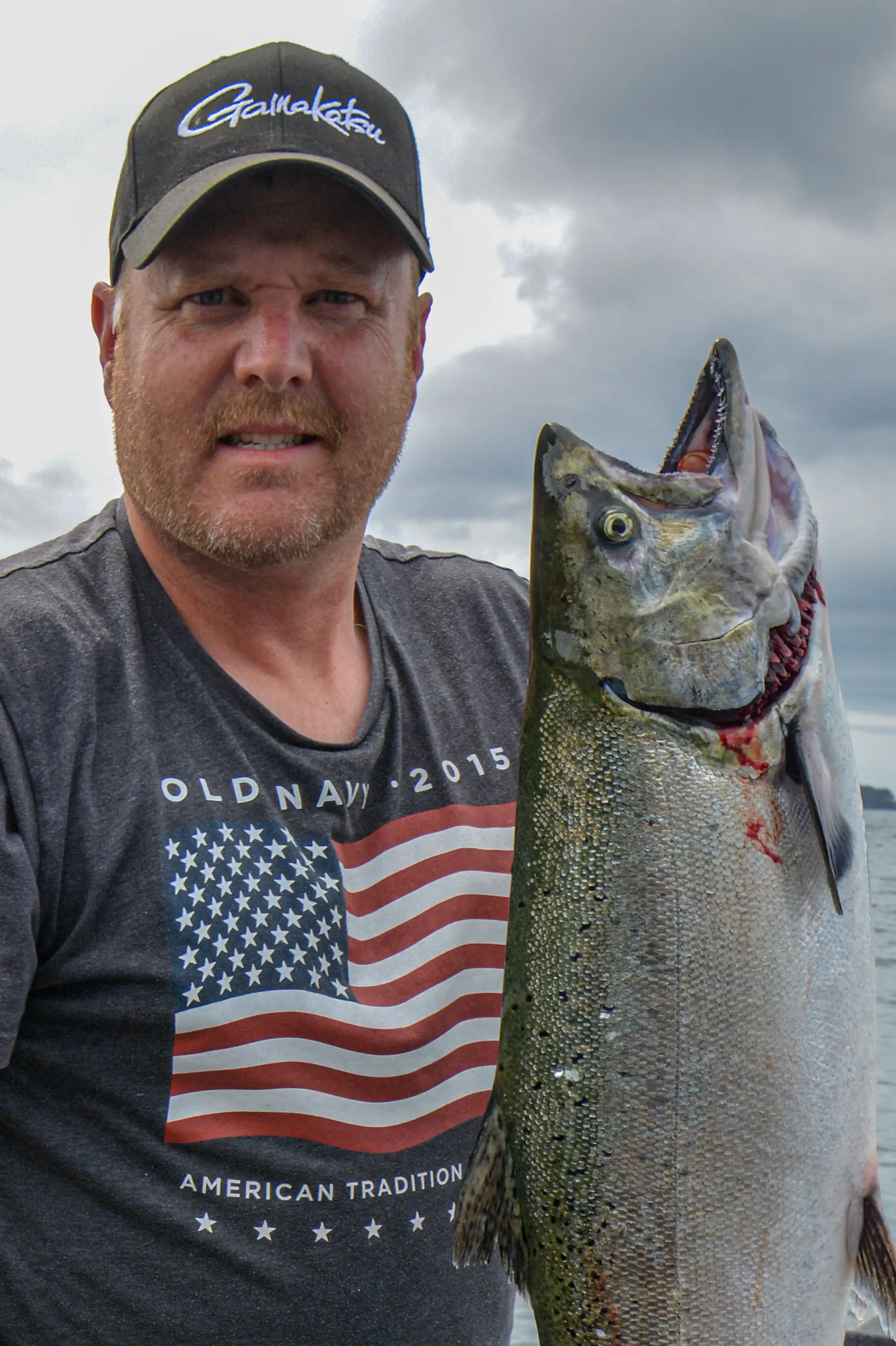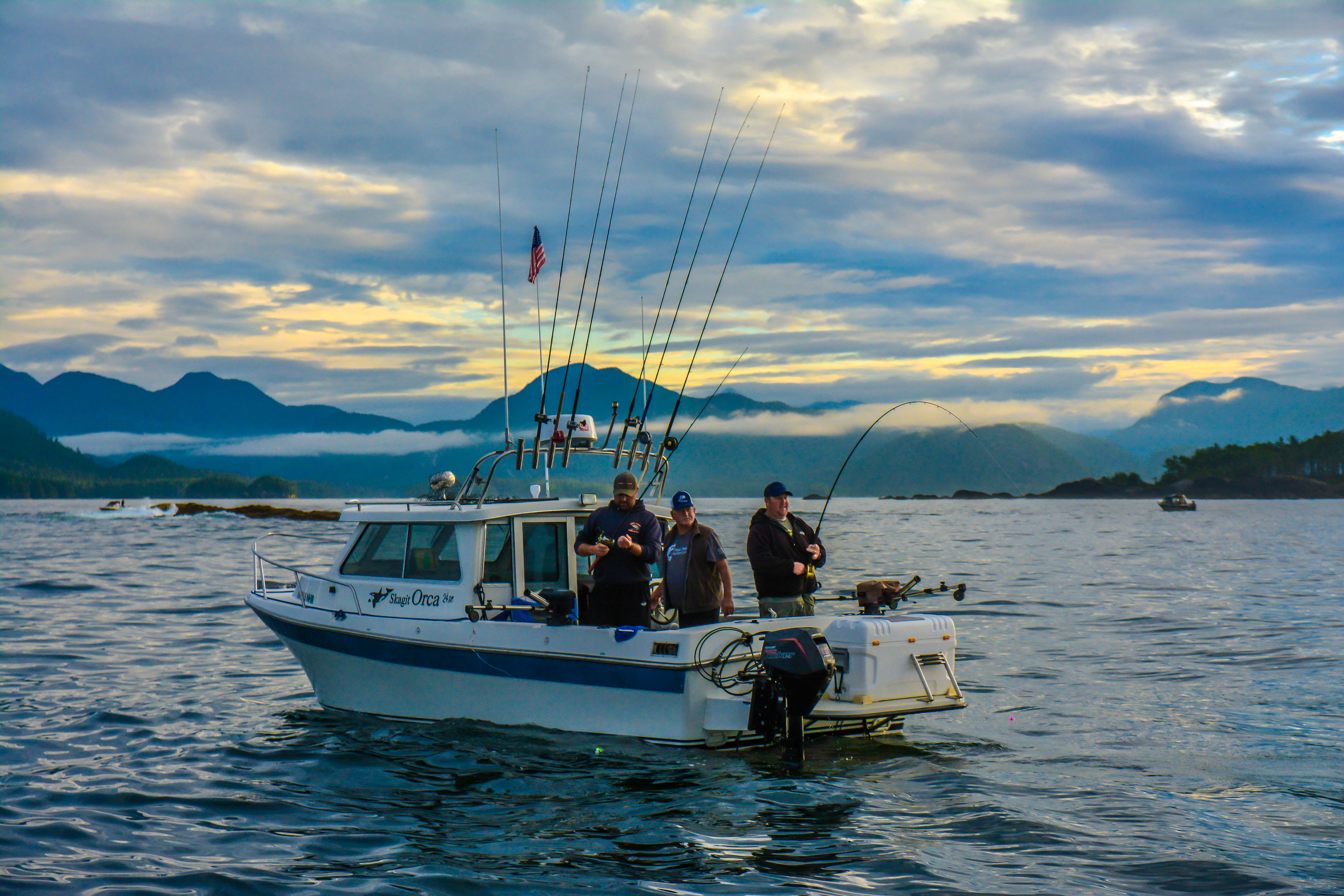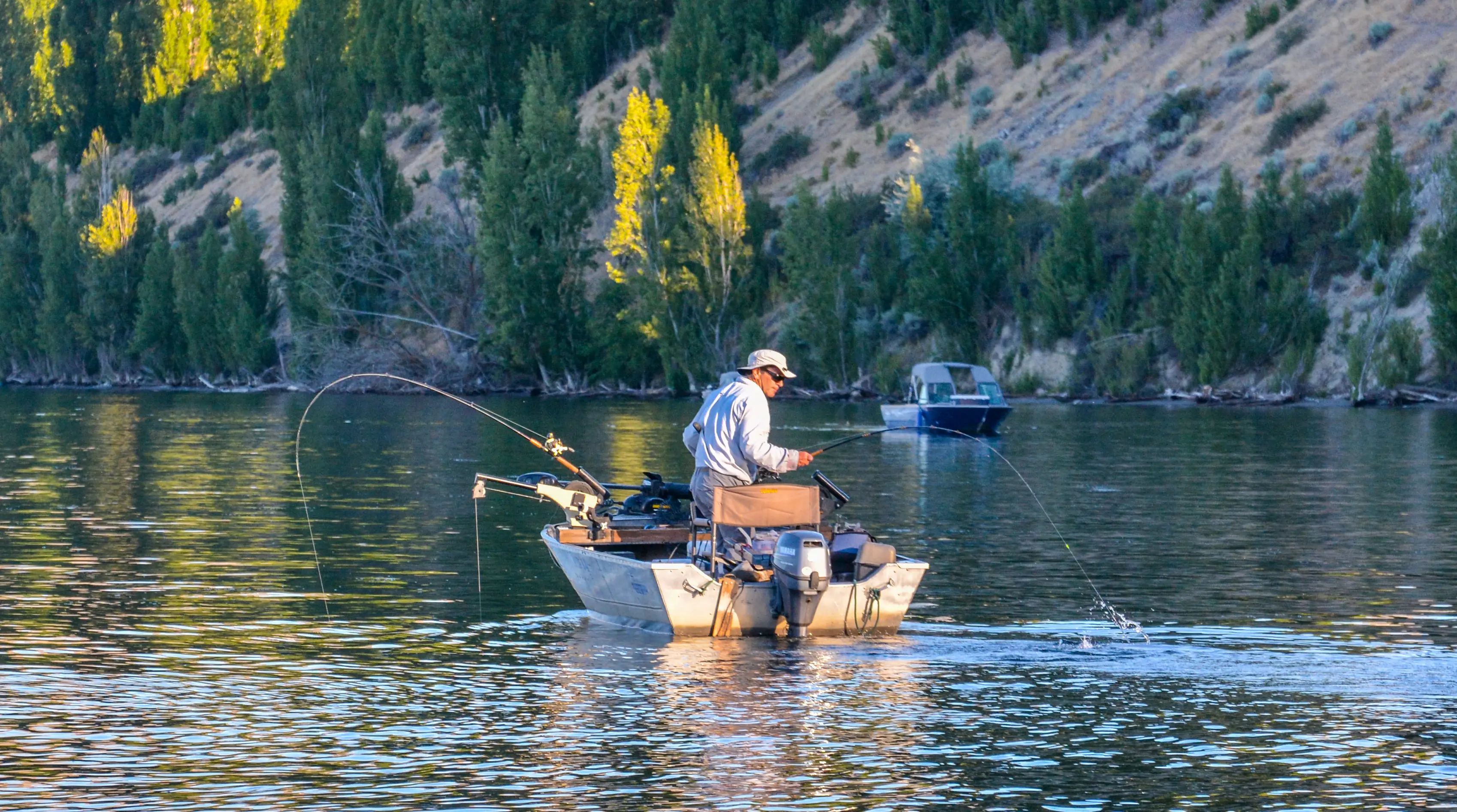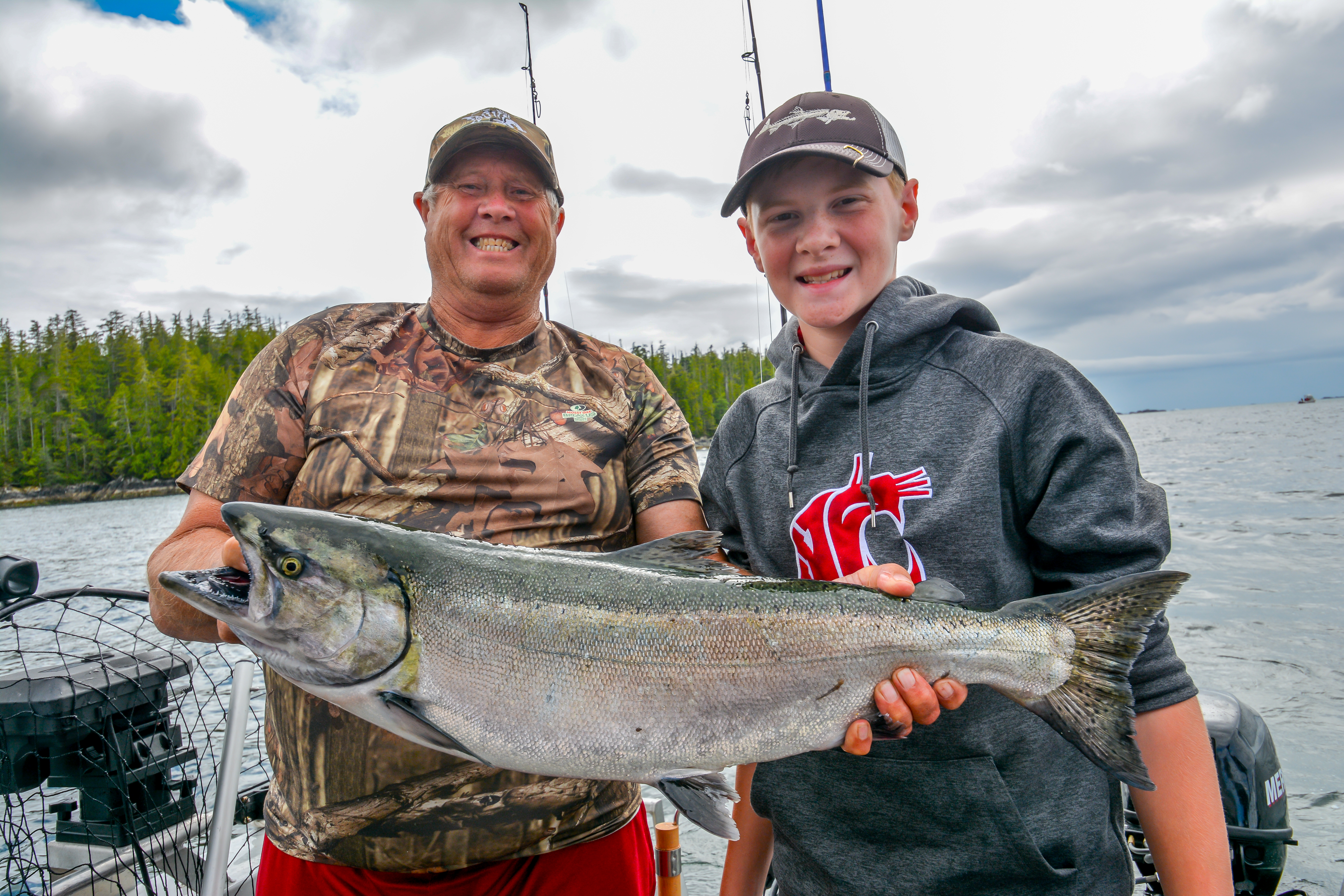Search
Latest Articles
Using Downriggers to Catch More Fish
by Jason Brooks, October 05, 2019
Using downriggers can be a bit overwhelming but once the technique is learned they become an asset to catching more fish. The idea is to lower you gear to a specific depth to target salmon that are actively feeding, resting, or migrating. There are a few different types of downriggers but they all use the same concept of dropping a heavy weight, or “ball”, and use a clip to attach your line. A line counter lets you know how much cable has been put out. However, not all downriggers are created equal and there are several variances that can make your use of them easier.
Starting with the unit itself. There are two main “types” with them being electric or hand-crank. The electric downrigger is most popular due to the ability of pushing a button and the downrigger ball comes back up to the boat by the use of an electric motor. The hand-crank is just that; you must crank up the downrigger ball by turning the spool. One of the main reason’s why anglers use the hand-crank is due to costs as they are fairly inexpensive compared to the electric versions. Some hand-crank downriggers have a two-foot per turn retrieve and some have a one-foot per turn retrieve. If you fish shallow waters, such as thirty feet or less and rarely use downriggers with the exception of a few fisheries each year then the hand-crank will suit you just fine. They are also lighter and are a good option for those in small boats or kayaks.
Electric downriggers are heavy and must be mounted to a sturdy platform. Most boats have downrigger brackets for this reason. A 12-volt power source is needed and the outlet should be within three feet of where you are mounting the downrigger. Scotty electrics are very popular because of their ease of use and they have several mounting brackets and options available. One other drawback to using electrics is that they tend to use a lot of battery so it is best to either have them connected to a separate battery or your motor has a charging unit to keep the battery charged. The plus to electrics is that they are easy to use, especially for a lone angler, and they also tend to put out an electrical current into the water that draws fish.
Spooling the downrigger leaves you two options, with the most popular being the stainless steel cable that comes pre-spooled. The cable can be hard to work with when attaching the hardware needed to clip on the downrigger ball. You will need to carry a small toolkit with you and the spare swivels, clips and other accessories. Stainless steel cables are prone to breaking and can kink when bent. They do rust over time and should be checked each season. However, the only way to get the positive electrical charge into the water is to use the cable and it is fairly inexpensive to replace. The second option is to use braided wire or line. If you already use braid for your mainline then you know that it is limp and easy to tie knots with. The downrigger braid is usually 130 to 300-pound test dacron or equivalent. The thin diameter and super strong braid is a great downrigger cable but you don’t get the electrical charge and if you don’t spool it tight enough it can bind with the use of a heavy downrigger ball. In the instance of a ball being hung up or lost you can cut off the weakened section of braid and simply tie on another snap and put on a new downrigger ball. No toolkit needed. Compared to stainless steel cable, braided downrigger line is very expensive but you can also put more on the spool allowing you to fish greater depths.
The downrigger ball is what gets you down to the depth where the fish are. In heavy currents the need for a heavier ball is a must. Back to the stainless steel cable, it is prone to having “blowback” which is the drag of the cable and the ball in the water so when you think you are at a certain depth on the line counter you are really a few feet above that as the cable angles back away from the boat. There is virtually no “blowback” with braid due to its thin diameter. If you are using a hand-crank then you probably want to use as light of a downrigger ball as possible since you will be manually pulling it up. Most use an 8 or 10-pound ball with hand-crank downriggers. Those that use electrics often use 12 or 15-pound balls.
The shape of the “ball” can help reduce the blowback as well. A paddle style ball is round shaped but is flat, like a saucer, and has a fin to keep it from spinning. Another style that makes retrieval easier is the long cylinder shape, much like an old window shade weight or one’s you see on Grandfather clocks. The shape allows you to pull it up easier and also causes less drag in the water. However, these are “specialty” weights and more than likely when you go to purchase your downrigger and ball you will find the standard lead ball type weight. Be sure to get a cradle as well. When running from one fishing spot to another it is best to either attach the downrigger ball to the hook on the boom or place it in a cradle made for the weight.
The last component to using downriggers is the release which is how you attach your line to the cable. Some clips attach to the ball and others use a tension clip that attaches to the cable. There is a leader to the clip for the line and if you are using a long boom then use a long leader clip. For safety reasons you should be able to stand at your downrigger and grab the leader and pull the clip to you so you don’t have to lean over the water to attach your line. There are some accessories you can use to have the downrigger ball slide closer to your boat or you can use a boat hook to grab the clip and pull it up to you. Scotty downriggers also have a tilt feature that allows you to pull upwards on the boom and swing the ball towards you so you can grab the clip easier. When it is time to secure the ball you can use the same method without having to lean over the side of the boat.
The type of release you use depends on what gear you are fishing. The Scotty pinch clips work well for most fishing. If you need more tension then simply pull back on the rear of the clip and it will tighten it. For a soft-mouth salmon fishery, such as Sockeye fishing then use the lighter tension setting. When fishing deep or in heavy currents then the wrap and clip style downrigger release is a good option. This type of release has a bobbin that you wrap your line around and then fold it over until it clips into the base. It is very sturdy and best used for Coho and Chinook fishing.
There are a few “tips and tricks” when using downriggers that will increase your catch rate as well as the ease of using these trolling aids. The first is to use a “scent bomb” attached to the downrigger ball. This can be a hinged type plug, or a cavity of some sort with a leader and a snap swivel. The idea is to fill it full of your favorite scent or crushed up bait and as you troll along it will dispense extra scent into the water at the depth of your bait.
Another good idea is to use an in-line flasher attached to your downrigger ball and even have the scent bomb trailing the flasher. This adds extra flash as well as scent into the water. By attaching a flasher to the downrigger ball you can run baits such as cut-plug herring, anchovy in hoods or a bare spoon with nothing else on the line. Be sure to only put it back a few feet from the release and keep the release just above the downrigger ball and the flasher. When using a clip on release make sure it is a bit longer than the boom and add a float such as a large spin-n-glow. This makes it easier to grab and hold onto.
Stop beads are designed for electric downriggers and when they hit the guide on the boom the downrigger automatically stops. This allows you to push one button and fight the fish while the motor retrieves the ball. A swivel base makes stowing the downrigger easy as well as you can swing it towards your boat to grab the downrigger ball without leaning over the gunnel. Some anglers like to use a rubber snubber between the cable and the ball which allows you to bounce the ball against the bottom without worry of breaking the cable, or if you aren’t paying attention and the ball hits bottom you are less likely to lose the ball. The snubber also takes some pressure off of the mount.
Stacking is another advantage to using downriggers. When fishing waters where the angler can use more than one rod or if there are multiple anglers on board you can “stack” lines. This means using more than one rod per downrigger line. Be sure to use a release that is made for stacking, which usually has two clips to it and is less likely to slide up the cable to another release and create a tangle. Stacking allows you to fish one bait deep and one shallow which is a great way to target different depts. When a bait ball is on the sonar put one bait at the bottom and one at the top of the ball to increase your catch rate.
You will notice that once you start to become proficient at using downriggers that they are easy to use and will help you catch more fish. Be sure to carry extra parts, such as belts, swivels, clips, balls, and releases. They require some maintenance, mostly just an inspection or replacement of the downrigger cable or a break adjustment. The dealer where you purchase the downrigger from usually can do this yearly maintenance for a small fee or you can do it yourself.
The downrigger has accounted for increased catch rates for a good reason and if you fish waters where they can be used then you will have the advantage once you learn how to use them. Using a downrigger allows you to keep your lure in the zone of the fish. They are a tool to be used in open water, bays, estuaries and large rivers and very affective. Salmon anglers have been using them for years and those that pursue Kokanee know how invaluable they can be. But other species can be caught using them such as trout and Mackinaw. When you are fishing a body of water where fish are holding at a certain depth regardless of species the downrigger is one of the most valuable tools an angler can use to catch more fish. Give downriggers a try and you will find yourself wondering how you ever fished without them in the past.
Jason Brooks hails from North-Central Washington. The son of a fishing guide, Jason is an avid hunter, angler, outdoor photographer and published writer. He resides in Puyallup with his wife and two boys.



